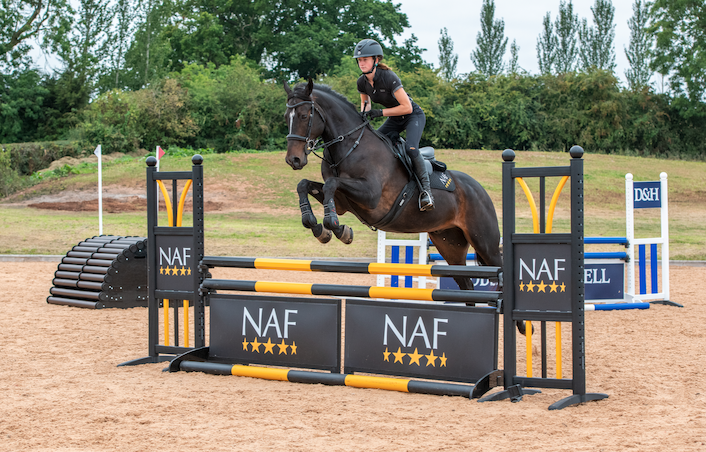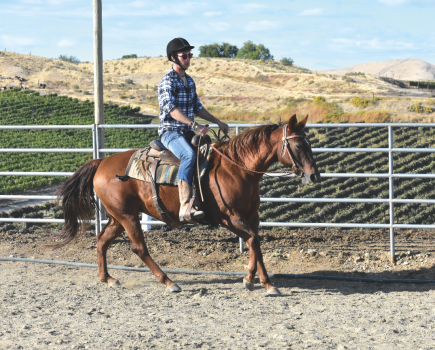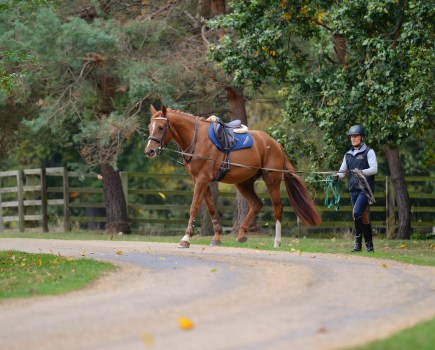Being able to jump a fence on a horse successfully needs more than just a point, kick and go strategy — you need to break the process down into a step by step approach so that you understand how it happens. Armed with this knowledge, you can give your horse the best ride possible and set yourself up for a clear, confident round.
According to trainer John Thelwall, there are five steps to think about:
- The approach to the fence
- Taking off
- Time in the air
- Landing
- Moving away from the fence.
The approach
“The most important thing to remember on the approach to a fence is balance and rhythm. Get these two things right and your chances of success will soar,” says John.
This is something that can easily be trained at home. Practise turning to fences off both reins and from different distances. Instead of always jumping on fence, put a few together and think about the lines you are riding between each of them.
By the you are approaching a fence you need to be in the most appropriate pace with balance and rhythm. You will also need enough energy and impulsion in the canter for the horse to be able to jump what you’re asking them to.
Energy and impulsion isn’t the same as speed. Too much speed and your horse will jump flat, possibly knocking the fence down and landing on the other side with little control.
Too little energy and your horse may refuse the jump, get too close to it and therefore have a poor take-off spot, and/or make a poor shape that may cause the fence to fall down.
Taking off
“Getting a perfect take off is all about leaving the ground at the right spot and creating the power and impulsion to get up and over the fence,” explains John.
“Your job is to get your horse to the fence correctly to give them the best possible chance of a powerful take off.”
Once you’ve got to the take off spot, it’s your horse’s job to physically take off and jump the fence. You need to allow them forward with your hands to do this, and your upper body will go forward so that you stay in balance with the horse.
In flight
This is the moment when your horse has all four legs off the ground, as they jump the fence.
“This is called the ‘in flight’ stage and the horse is doing all the work now,” says John. “Your job is to not get in the way and prepare yourself for landing, which often comes quicker than you’re expecting.”
Landing from a jump
So you’re nearly over and it’s time for touch down.
“It’s important you stay in balance so that your horse can move away quickly. Don’t throw your reins at the horse as you land; they need you to be ready for the next phase.”
Moving away from the jump
As you canter away from the fence, it’s important to re-establish balance and rhythm.
“This is effectively the start of your approach to the next fence,” advises John.
Remember your horse has no clue where you’re going, so make it easy for them. This means you will need to be sitting up, looking ahead to the next fence, riding positively forward on the best line to get the next jump.
So the next time you are schooling over fences at home, remember this five-step approach. They all count towards riding a clear round in a safe, confident way that both you and your horse will enjoy.
Main image © Your Horse Library/Kelsey Media/Sally Newcomb









